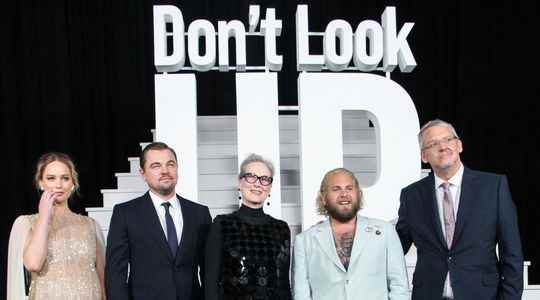Don’t Look Up is the film of the moment: snapshot of the time, chemically pure concentrate of our inconsistencies, our denials, our little arrangements with a reality that stubbornly refuses to bend to our pleasure. Of course, satire is sometimes written there with a trowel. Everyone will have understood that the comet which threatens without anyone intervening effectively is an allegory of our shortcomings in the face of climate change. The demonstration by the absurd remains no less brilliant – and ultimately more enlightening than it seems. Paradoxically, the very real differences between these two predicted disasters underscore what makes climate change so difficult to combat.
One of the fundamental problems in the fight against climate change is the gap, in space and time, between reducing emissions and preserving the climate. The CO2 molecule produced in Paris does not contribute more to the increase in the risk of summer heat waves in France than its twin emitted in Shanghai or Houston. The costs to prevent it from coming out of an exhaust pipe or a factory in the Ile-de-France region, however, hit a French wallet well. The price of the efforts made is always felt at the local level, when the benefits are diffused throughout the planet.
Worse, the climate system is far from being reactive: today’s emissions impact the climate of the 2040s. In other words, our current reduction efforts will not bear fruit for many years. The greenhouse gases injected into the atmosphere over the past decades have already decided the climatic impacts that we will have to undergo by 2040. A slowness that is hardly compatible with our culture of immediacy.
Temporal and spatial shift
These discrepancies largely explain the specificity of the climate challenge, which contrasts with the past successes of environmental action. In 1858, the British Parliament passed one of the very first environmental protection laws to solve what Londoners had poetically dubbed the Great Stink, the Great Stink. The industrial revolution was then in full swing: the booming English textile industry was abandoning its toxic waste in the Thames, while the rapidly growing population of London saturated the river with its excrement. An explosive combination, which had caused such pestilence that in the summer of 1858 the Parliament of Westminster itself – located on the banks – had to be evacuated.
Everything agreed here to solve the problem: nearby sources and consequences of pollution; better, gathered under the same jurisdiction; better still, the competent powers were themselves victims. In less than three weeks, the olfactory crisis led to the drafting of the first law regulating industrial discharges and the creation of London’s sewers. None of this in climate matters: each of these three conditions is even reversed. By contrast, preventing a comet from extinguishing all life on earth would seem almost refreshingly simple.
To make matters worse, combating climate change does not require one-off action, but rather a change in the structure of development, with profound ramifications in our lifestyles, in the very organization of society. Climate change is the ultimate long-term crisis. The evil progresses quietly, continuously, only capturing the headlines of world attention by its meteorological outbursts: fires, cyclones, floods – whose exact attribution to climate change, an additional obstacle, still remains uncertain. . The solutions are no less diffuse, requiring years of effort and investment, from the local level to international coordination.
In many respects, climate change and the responses we must provide to it are the Hollywood anti-catastrophe par excellence. Slow, gradual, imperceptible: a small spectacle disaster, without Grand Soir or the day after. This is no doubt why it took a comet to cast a ferociously satirical gaze on the pusillanimity of our renunciations.
